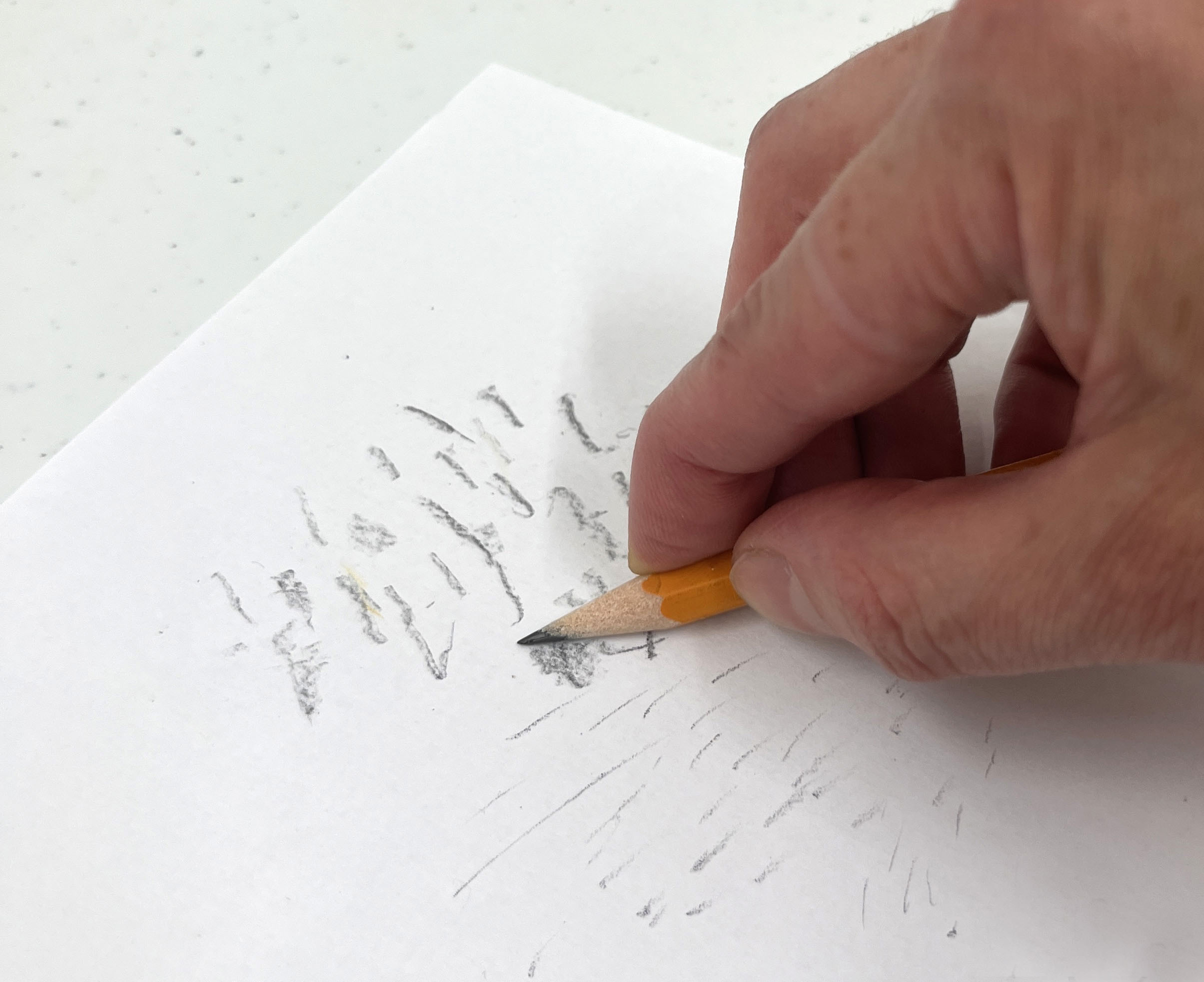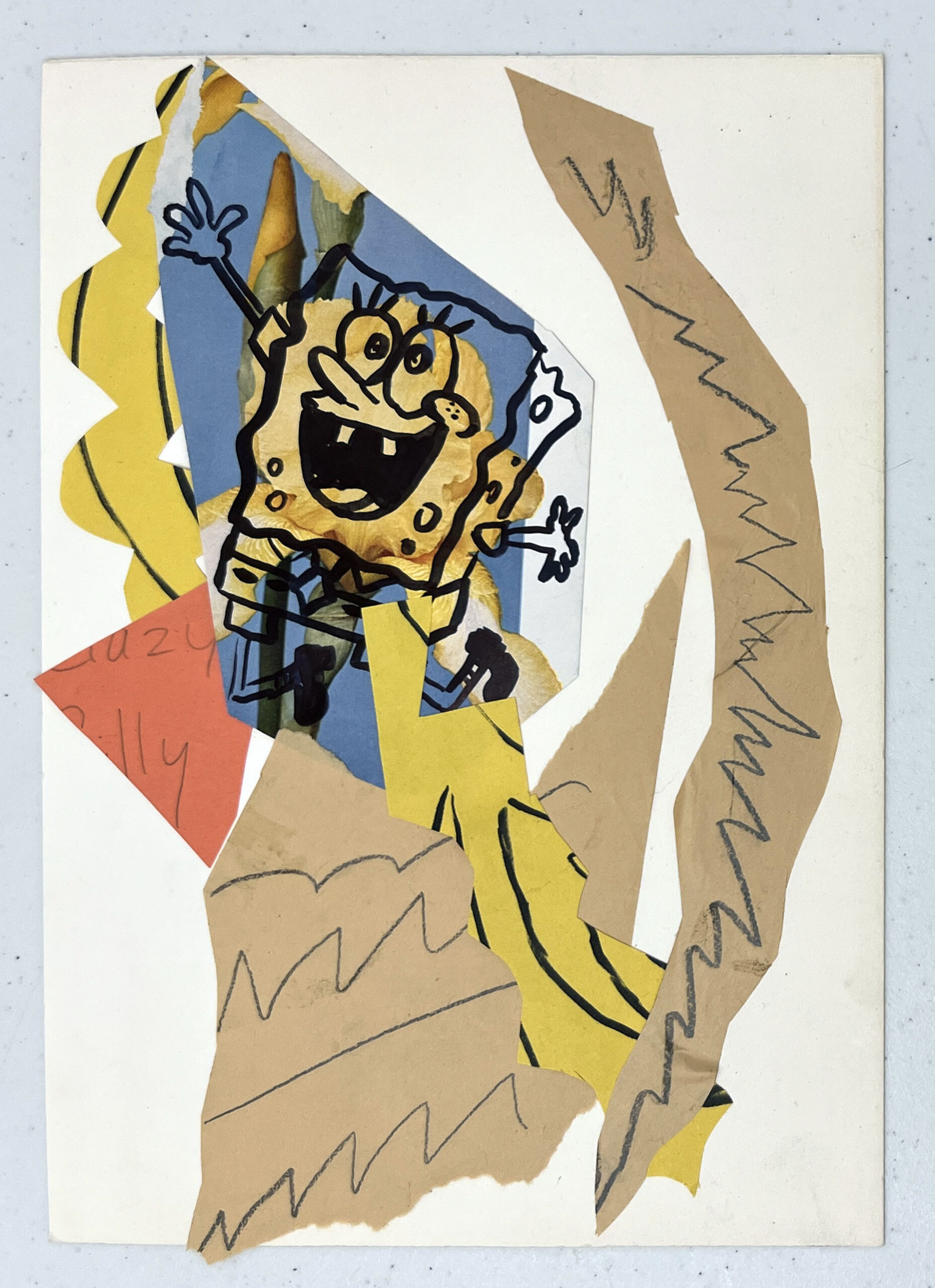Overview
In this lesson, you will explore Jean-Michel Basquiat’s process by layering and combining different art materials to create a playful composition that includes your favorite character.
Materials and Tools
- Sketchbook or piece of blank paper (any color)
- 4-5 pieces of various papers (construction paper, newspapers, magazines)
- Glue or glue stick
- Any drawing and/or painting materials, such as: pencil, colored pencil, crayons, markers, oil pastels, or paint
- Scissors

Activities
Step 1: Close Looking: Pink Amos or Andy
Jean-Michel Basquiat used many different art materials and techniques to create his artwork. He was inspired by music, television and movies, and often included references to different characters and people he admired in his work.

- Take a moment to look closely at this artwork. What stands out to you?
- What shapes and lines do you notice?
- Basquiat included drawings of three faces in this painting. How would you describe the faces? How are they similar to and different from each other?
Jean-Michel Basquiat was inspired by music, movies and television. The title, Pink Amos or Andy, refers to Amos and Andy, a popular television show from the 1950s that was the first TV series to feature an all-black cast, and was criticized and ultimately canceled for its stereotypical portrayal of Black characters.
Max Roach was a famous jazz drummer and one of Basquiat’s musical heroes.
- Jean-Michel Basquiat loved to read, and he liked to play with words in his artwork. What words stand out to you in this artwork? What connections can you make between the words and the images?
- Basquiat liked to combine different art materials in his work. Where do you see evidence of different art materials?
- Jean-Michel Basquiat began this artwork by making drawings on paper. Next, he created a collage with the drawings by arranging and gluing them onto a canvas. Look closely at the collaged parts. Where do you see:
- Overlapping (shapes layered on top of other shapes)?
- Shapes that have been cut or torn?
- Shapes that have been combined to make a composite shape?
- After he created the collage, Basquiat painted and drew on top of the collage with oil sticks and acrylic paint. What do you notice about the relationship between the collaged pieces and the drawn and painted marks?
- In art, the subject or object of an image is called positive space and the space around and between the positive space is called negative space. Where can you find positive and negative space in this artwork?
Step 2: Mark Making Exploration
Choose one of your drawing materials and one of your papers. Explore making different types of marks by:
- Varying the pressure to make dark and light marks
- Drawing with the tip and the side to make thick and thin marks
- Holding the material in different ways (tight grip, light grip, hold at the top, hold at the bottom)


Step 3: Creating 4 Drawings on 4 Pieces of Paper
You can use construction paper, newspapers, and/or magazines as the paper for these drawings. Don’t get too attached to your drawings, because you will cut them up to create a collage. Make a separate drawing on each piece of paper.
Drawing 1
Fill up your paper with many different types of lines:
curvy, coily, zigzag, spiral, horizontal, vertical, diagonal.

Drawing 2
Create geometric and freeform shapes by combining different
types of lines. Make as many different shapes as you can!

Drawing 3
Use lines and shapes to draw one of your favorite characters.

Drawing 4
Make a list of words that relate to your favorite character.
What is their name? What words describe them? What do they like to say? What do they like to do?

Step 4: Collage Exploration
Now you will turn the drawings you created into interesting shapes, using scissors.
- Draw with scissors by using your scissors to create different lines: curvy, coily, zigzag, spiral, diagonal.
- Tear the paper with your hands to create a different type of edge.
- Create 5-6 interesting shapes to use for your collage.

Step 5: Playing with Composition
Now it’s time to play with your shapes to create a composition.
Your sketchbook or blank paper will be the background for your collage.
Try:
- Overlapping: layering shapes on top of each other
- Creating compound shapes: what new shapes can you make by arranging your shapes in different ways and making them touch?
- Creating positive and negative space: fill some areas of the paper and leave some areas empty.
Once you have a composition you like, glue your pieces down.




Step 6: Responding with Color
What shapes, lines and colors can you add to your collage?
- Using your drawing or painting materials, choose 1-2 colors to add to your artwork

Step 7: Reflection
When your work is complete, spend a moment looking at your finished piece.
- How did your artwork change from the original drawings to the completed work?
- What was fun about that process?
- What does your artwork express about your favorite character?
Vocabulary
Composition
Overlapping
Positive and Negative Space
Compound Shape
Geometric Shape
Free Form Shape
Lines: curvy, zigzag, spiral, horizontal, vertical, diagonal
Credits
Written By:
Nicola Giardina, Director of Teaching and Learning
Lesson Development:
Julie Applebaum, Senior Director
Photographs and Sample Drawings:
Andrea Burgay
All works ©The Estate of Jean-Michel Basquiat, Licensed by Artestar, New York
KingPleasure.Basquiat.com
Copyright © 2023 Studio in a School NYC LLC

